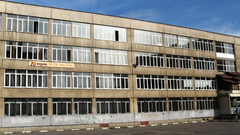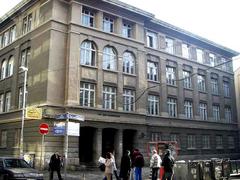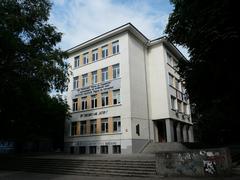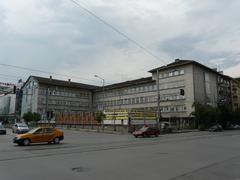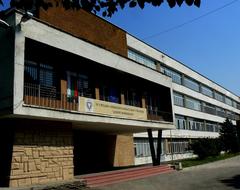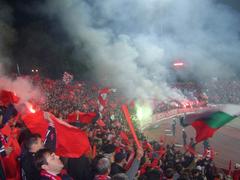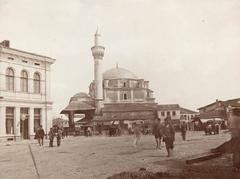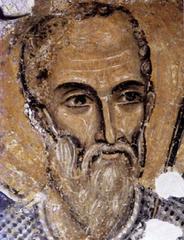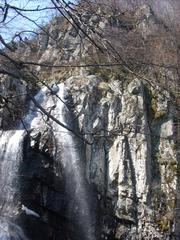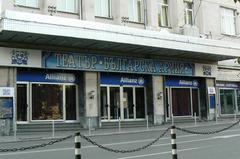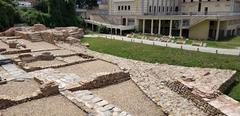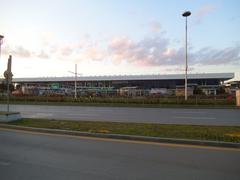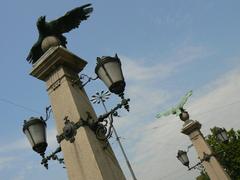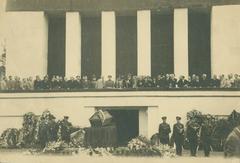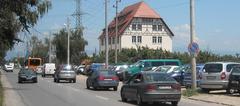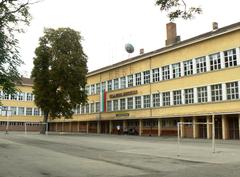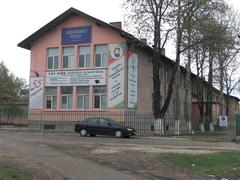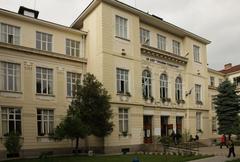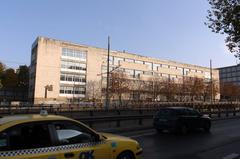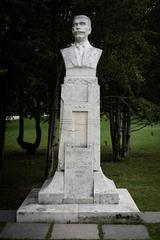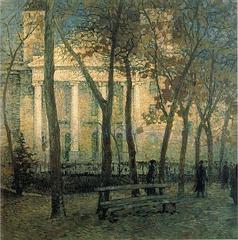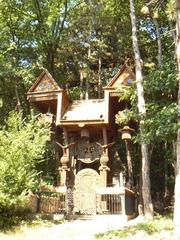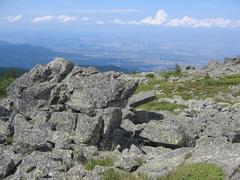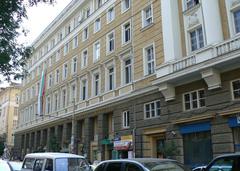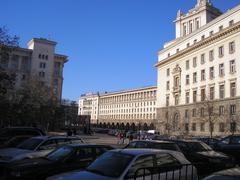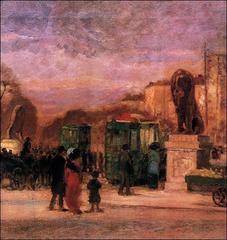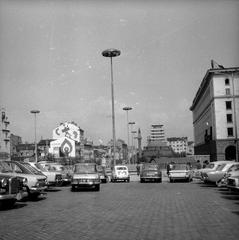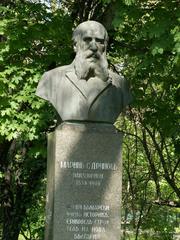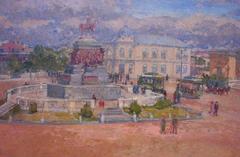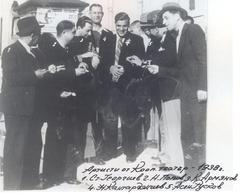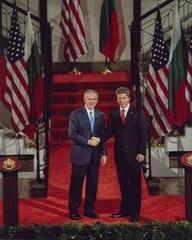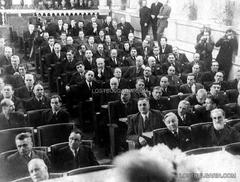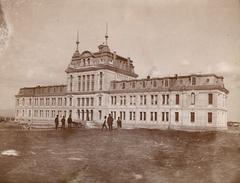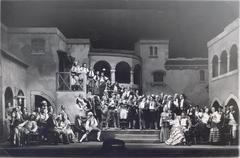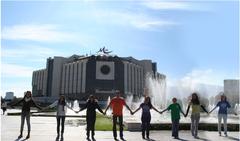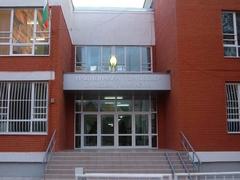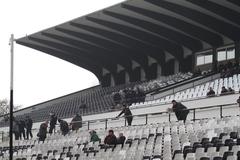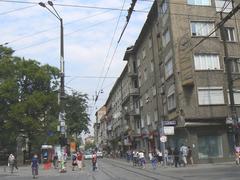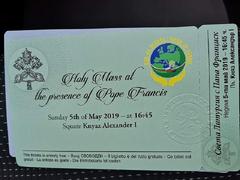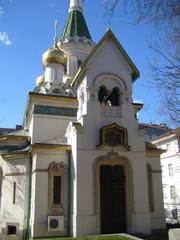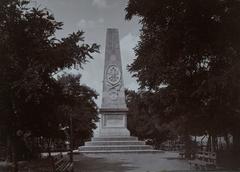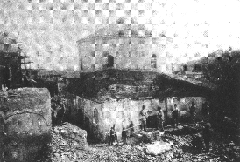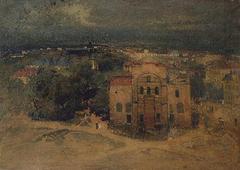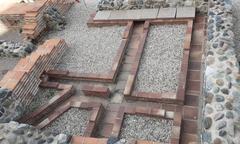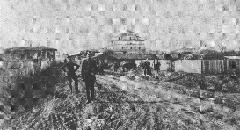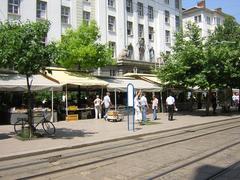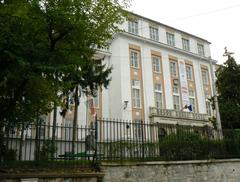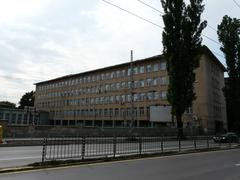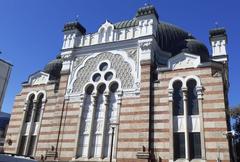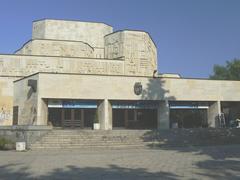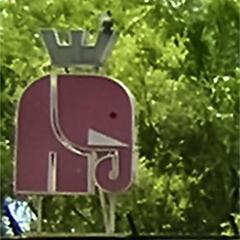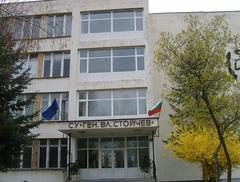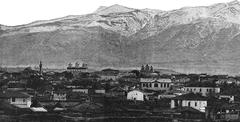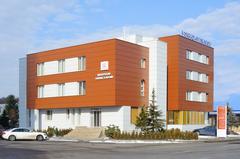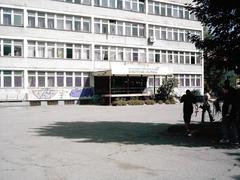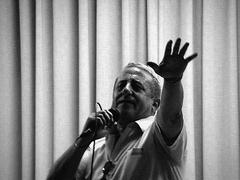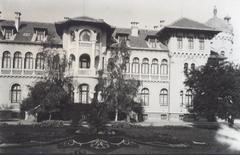
Orlov Most (Eagles’ Bridge), Sofia: Visiting Hours, Tickets & Historical Sites Guide
Date: 04/07/2025
Introduction
Orlov Most, or Eagles’ Bridge, is a landmark of historic, architectural, and civic importance in Sofia, Bulgaria. Erected in 1891 at the intersection of Tsarigradsko Shose Boulevard and Evlogi i Hristo Georgievi Boulevard, the bridge is adorned with four imposing bronze eagle statues, symbolizing freedom and vigilance. As a gateway to the city center, Orlov Most is freely accessible 24 hours a day, connecting visitors with Sofia’s vibrant urban life and nearby attractions. This guide provides a detailed look at Orlov Most’s history, cultural significance, architectural features, visiting logistics, and practical travel tips.
For further insights, refer to Audiala’s guide to Orlov Most and the Wikipedia page on Eagles’ Bridge.
Table of Contents
- Historical Background and Construction
- Symbolism and National Significance
- Civic Role and Cultural Events
- Architectural Features
- Visiting Hours and Tickets
- Accessibility and Getting There
- Nearby Attractions
- Guided Tours and Events
- Frequently Asked Questions (FAQs)
- Visuals and Media
- Conclusion and Recommendations
- References
Historical Background and Construction
Orlov Most was built in 1891 as Sofia underwent rapid modernization following Bulgaria’s liberation from Ottoman rule. Designed by Czech architects Antonín Kolář and Václav Prošek, the bridge spans the Perlovska River and serves as the eastern entrance to Sofia’s city center. The bronze eagles, cast in Vienna, are central to the bridge’s identity. The construction was executed by the “Rudolf Philip Waagner & Biró” company, which also contributed to other Sofia landmarks.
The site itself holds historical resonance, marking the location where, in 1878, Bulgarian prisoners returning from Ottoman exile were welcomed home after the Russo-Turkish War. A commemorative stone, placed in the 1990s, honors this event (Wikipedia; Audiala).
Symbolism and National Significance
The name “Orlov Most” derives from the four bronze eagles on its pillars, representing guardianship, freedom, and the aspirations of the Bulgarian people. The eagles are so emblematic that they appear on the reverse of Bulgaria’s 20 lev banknote, further cementing the bridge’s status as a national symbol (Wikipedia).
Orlov Most is not only an architectural monument but also a site of national memory, evoking Bulgaria’s journey to independence and the spirit of resilience.
Civic Role and Cultural Events
Since the late 20th century, Orlov Most has been a prominent gathering place for public demonstrations, political rallies, and cultural events. Notable moments include the 1990 Union of Democratic Forces demonstration and the 2012 environmental protests. Its central location and symbolic value make it a focal point for civic expression, underlining Sofia’s democratic vitality (Wikipedia).
Throughout the year, the area hosts festivals, open-air concerts, and city celebrations, especially given its proximity to Borisova Gradina Park and other cultural venues (ExploreCity).
Architectural Features
The bridge is constructed from robust local stone, with four corners marked by tall pedestals bearing the signature bronze eagles. The design blends Central European architectural influences with Bulgarian national motifs. Additional artistic elements include ornate candelabra, which lend a 19th-century elegance to the structure. Renovations over the decades have preserved its historical character while adapting to modern traffic needs.
Orlov Most is paired with its architectural twin, Lavov Most (Lions’ Bridge), further contributing to Sofia’s monumental landscape (Audiala).
Visiting Hours and Tickets
- Opening Hours: Orlov Most is open to the public 24 hours a day, 7 days a week.
- Tickets: There are no entrance fees or tickets required. The bridge is a public thoroughfare accessible at any time (Audiala).
Accessibility and Getting There
Orlov Most is highly accessible:
- By Metro: Use Sofia University Metro Station (M1) or Orlov Most Metro Station (M3).
- By Tram/Bus: Multiple lines serve the area, connecting to major city districts.
- On Foot/Bicycle: Wide sidewalks and bike lanes facilitate easy pedestrian and cyclist access.
- Accessibility: The area is mostly flat and pedestrian-friendly, with ramps and crossings for visitors with mobility needs.
Parking is available nearby but may be limited during peak times (Wikipedia; Audiala).
Nearby Attractions
Orlov Most is surrounded by several notable sites:
- Borisova Gradina Park: Sofia’s largest green space, ideal for walks and picnics.
- Vasil Levski National Stadium: A major sports and concert venue.
- Lake Ariana: A relaxing spot for boating and outdoor activities.
- Sofia University “St. Kliment Ohridski”: Bulgaria’s oldest and most prestigious university.
- National Assembly and National Library: Landmarks of historical and cultural importance.
These attractions are all within walking distance, making Orlov Most a prime starting point for exploring Sofia (Ministry of Tourism).
Guided Tours and Events
Many local tour operators include Orlov Most in historical and architectural walking tours. The bridge is also a frequent location for public celebrations, protests, and cultural gatherings. For up-to-date listings of events, check local tourism resources or the Audiala app.
Frequently Asked Questions (FAQs)
Q: What are Orlov Most’s visiting hours?
A: The bridge is open 24/7.
Q: Is there an entrance fee?
A: No, Orlov Most is free to visit.
Q: How do I get there via public transport?
A: Use the Sofia University (M1) or Orlov Most (M3) metro stations, or city buses/trams.
Q: Are guided tours available?
A: Yes, numerous operators offer tours that include Orlov Most.
Q: Is the area accessible for people with disabilities?
A: Yes, the bridge and surrounding sidewalks are generally accessible.
Visuals and Media
Alt text: Orlov Most Bridge in Sofia with bronze eagle statues during sunset
Alt text: Map highlighting Orlov Most and nearby attractions in Sofia
Interactive maps and virtual tours are available on official tourism platforms for enhanced planning.
Conclusion and Recommendations
Orlov Most is not merely a bridge, but a living symbol of Sofia’s history, civic pride, and urban vibrancy. Open around the clock and always free to access, it offers a unique vantage point on the city’s development and cultural life. Whether you are interested in architecture, history, or simply enjoying Sofia’s green spaces, Orlov Most is an essential stop. Plan your visit during daylight for the best views, consider joining a guided tour, and explore the many attractions within walking distance.
For updated information, travel tips, and event calendars, download the Audiala app and follow official Sofia tourism channels. Learn more about the bridge’s history on Wikipedia.
References
- Orlov Most: A Complete Visitor’s Guide to Sofia’s Iconic Eagle Bridge and Historical Site, Audiala
- Visiting Orlov Most in Sofia: Architectural Significance and Visitor Guide, Audiala
- Cultural and Social Importance, Audiala
- Orlov Most (Eagle Bridge) Sofia: Visiting Hours, Tickets & Nearby Attractions, Audiala
- Eagles’ Bridge, Sofia, Wikipedia

